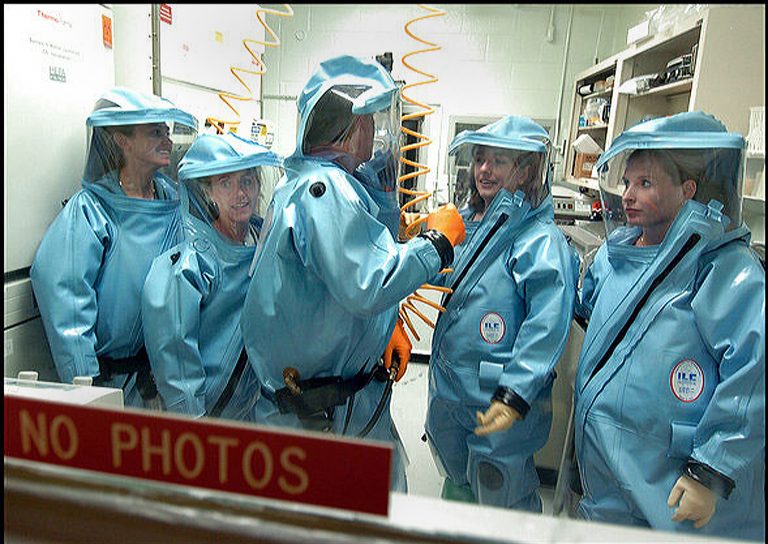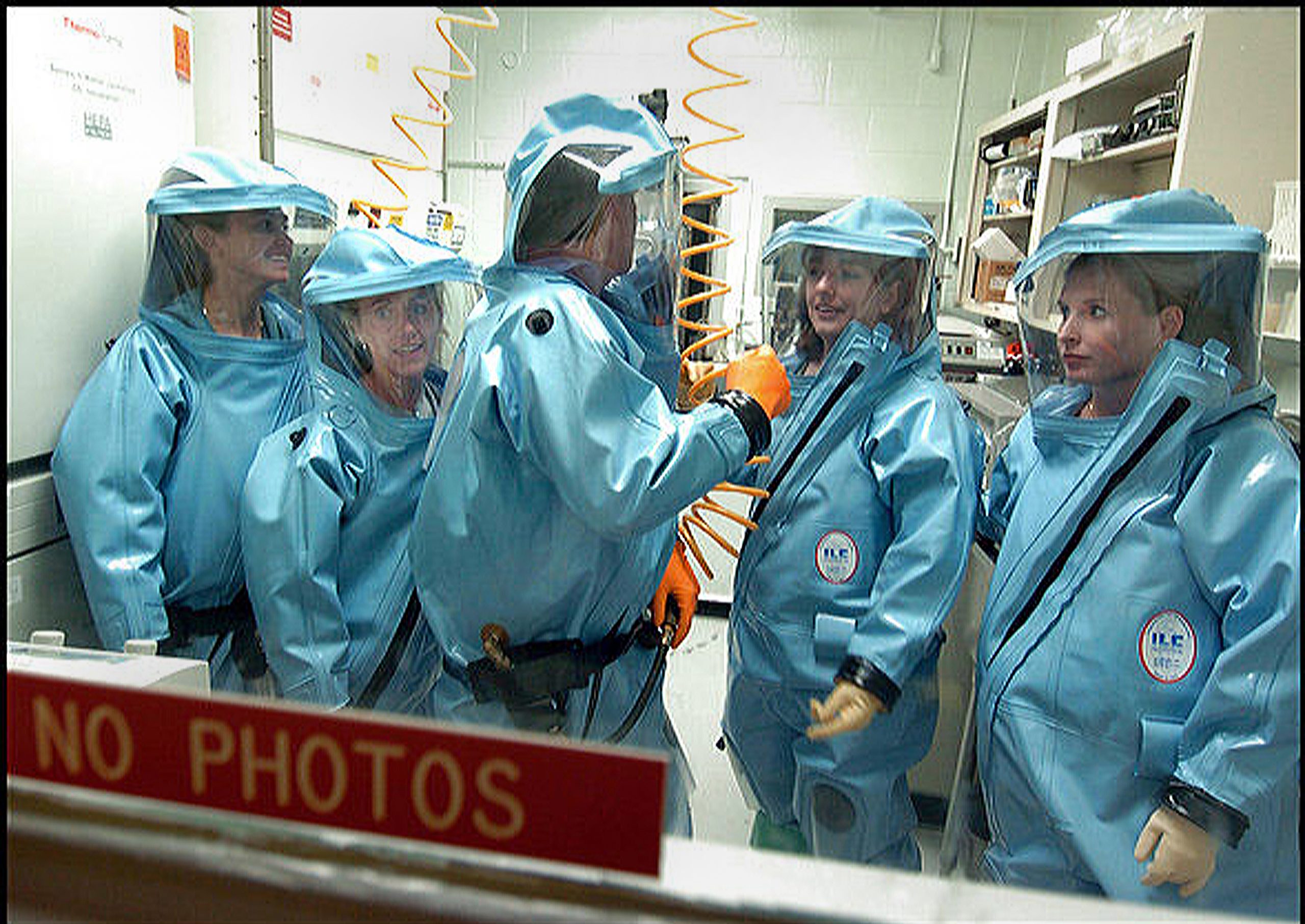Ebola: Inside the outbreak
Posted: November 14, 2014
Our world is in the midst of the worst Ebola outbreak in history and tensions are running high. Ebola is a severe, oftentimes fatal, virus that leads to high fever, vomiting, and both internal and external bleeding. The virus had never crossed into the United States until this summer. As of this publication, two Americans were brought back to the country in August for treatment after being infected while helping others in West Africa. Several other Americans contracted the virus while travelling outside the country in September and October.
Fortunately, the U.S. government has done well in prepping and securing our country from the threat of the virus thus far. Much of that can be attributed to Ebola experts like College of Graduate Health Studies Professor and Chair Kathleen DiCaprio, PhD.
Dr. DiCaprio has conducted years of research specifically on Ebola and other high containment viruses while working for the United States Army and Department of Defense. Her fascination with infectious diseases and her personal ties to the military inspired her field of research and led to the creation of one of five different treatments the U.S. government is currently considering as an experimental therapy for those infected with the virus.
“Our mission was to create and develop vaccines and therapies for anyone in need from a global health perspective,” says Dr. DiCaprio.
Ebola spreads through direct contact with blood, secretions, or other bodily fluids of an infected host.
Years ago, a woman in Germany working in a lab pricked herself with a needle while handling the Ebola virus. The treatment Dr. DiCaprio and her team developed was sent to her within 40 hours of the initial exposure. The woman suffered from a fever initially, but was cleared of all symptoms after the treatment.
“This outbreak will take a long time to control.” – Dr. DiCaprio
The two Americans infected by the virus in August were treated by another experimental therapy. They were both released from the hospital after both hospital and government officials concluded they were no longer a public health threat. However fortunate this case was, it remains the minority for those infected with the virus. It is not always possible to identify those with Ebola early because the initial symptoms may be non-specific. If one were to contract the virus and go untreated for 72 hours or longer, the mortality rate escalates to 100 percent, making it imperative to undertake the proper steps to contain the virus and ensure it does not spread.
For those in high-risk areas, it is important to apply standard precautions consistently. That includes basic hand and respiratory hygiene.
“In the United States, I think they’re handling the outbreak appropriately,” says Dr. DiCaprio. “You do what you can to follow protocol until something happens that results in a reactionary measure. Right now, they are following all of the procedures in place.”
This crisis marks the first time West Africa has had an Ebola outbreak. Most past outbreaks were in Central Africa—areas where it is typically very difficult to get in and out. Dr. DiCaprio says the outbreak in West Africa raises new concerns, as it is easier to access than Central Africa. That means the risk of exposure increases.
This also marks the first time the virus has spread to multiple countries. The outbreak was concerning enough for the World Health Organization to declare a public health emergency. The last time the WHO declared a public health emergency on a global front was in March 2003 during the outbreak of Severe Acute Respiratory Syndrome.
This is no longer a crisis that is isolated to that of West Africa, or even Africa as a whole. This is now a global health crisis. It is important for the global community to work in partnership with other nations to help aid the fight against Ebola.
Says Dr. DiCaprio, “We need to focus on public health measures—that becomes the most important effort that we can make.”
The WHO encourages understanding the nature of the disease and how it is transmitted to prevent it from spreading farther. For those in healthcare, it is important to maintain proper standards when caring for those infected with the virus. Gloves and appropriate personal protective equipment should be worn when taking care of patients. Due to the risk involved, it is important to maintain health standards among all patients in high-risk areas—even those not exhibiting severe symptoms.
“Right now it’s important that healthcare workers get the supplies they need. Without those supplies, public health measures have no use,” reminds Dr. DiCaprio.
In September, humanitarian groups sent nearly $6 million in medical supplies to West Africa to help aid in the fight against Ebola. Supplies included gloves, masks, and gowns.
To further combat Ebola, President Obama dispatched 3,000 troops to the West African region in September. His $763 million, military-led plan includes a new regional U.S. base in Liberia, portable hospitals, laboratories, and increased training for first responders and other medical officials. This marks the largest response to an international epidemic in U.S. history.
While there is no official cure for the Ebola virus, experts continue to work toward finding one. Progress has been made, and despite the current situation, experts and their research provide hope for a future free of the deadly virus.
“Time will tell. This outbreak will take a very long time to control,”says Dr. DiCaprio. “But everyone is working together to stop it.”
Photo credit: © Ricky Carioti/Washington Post
